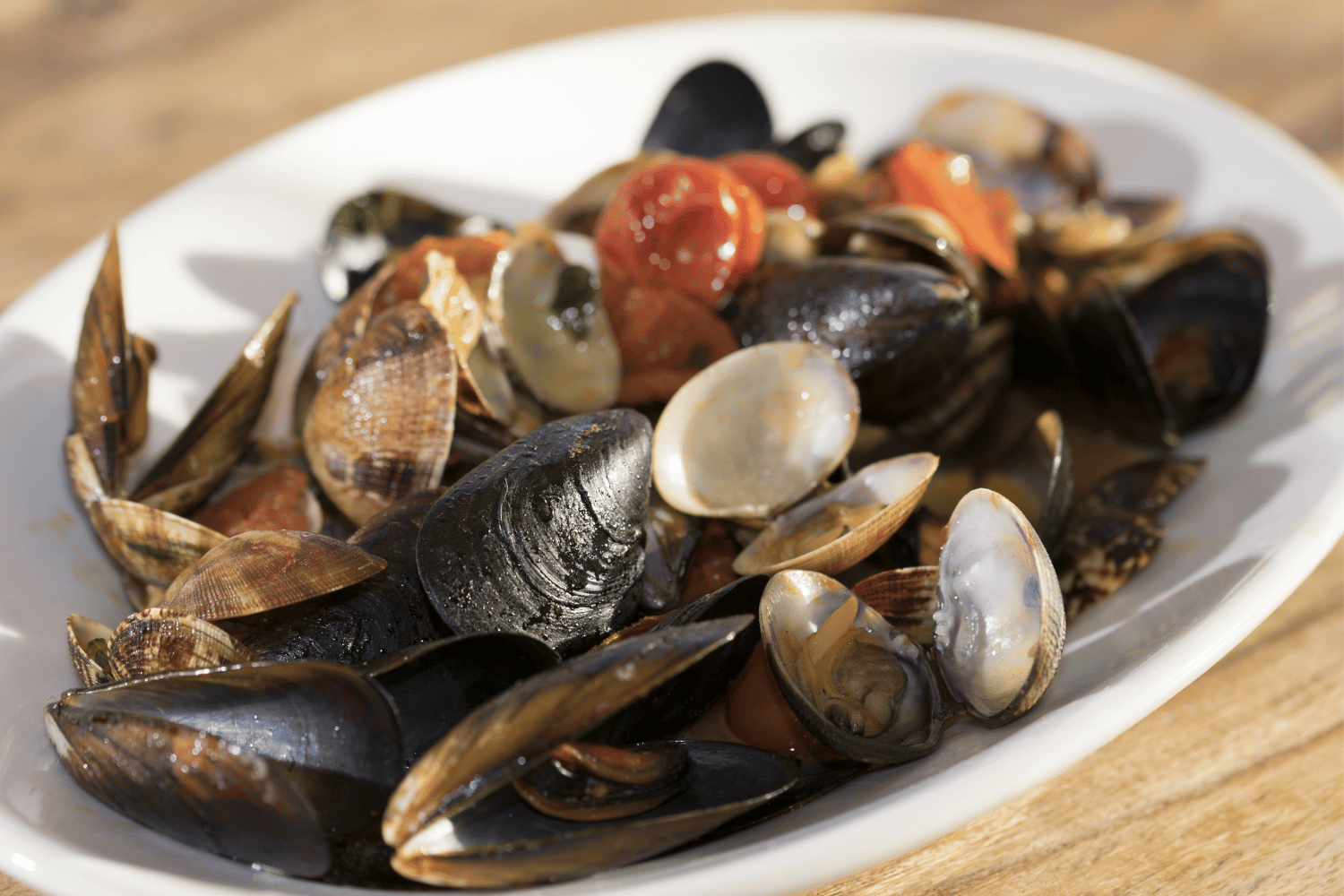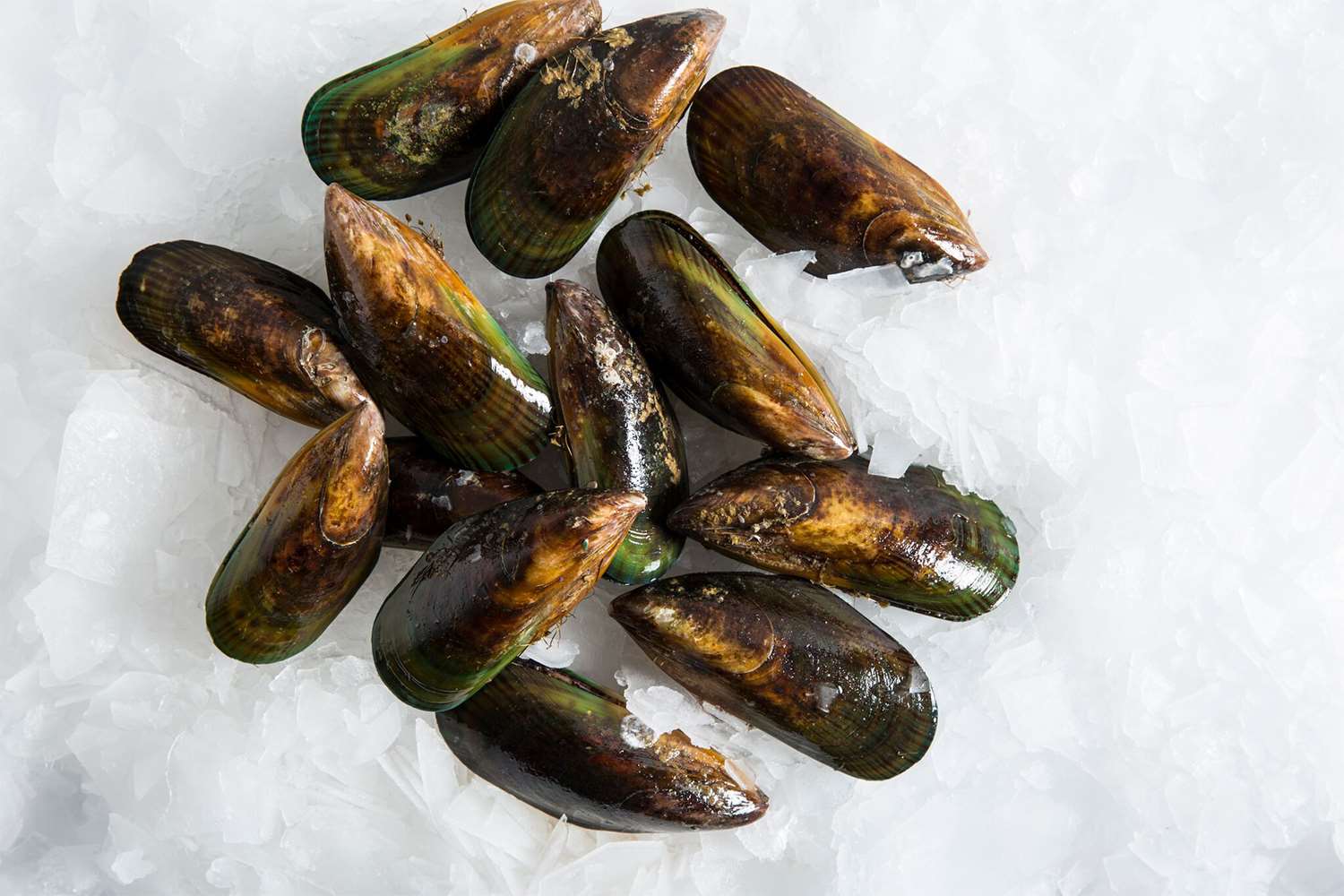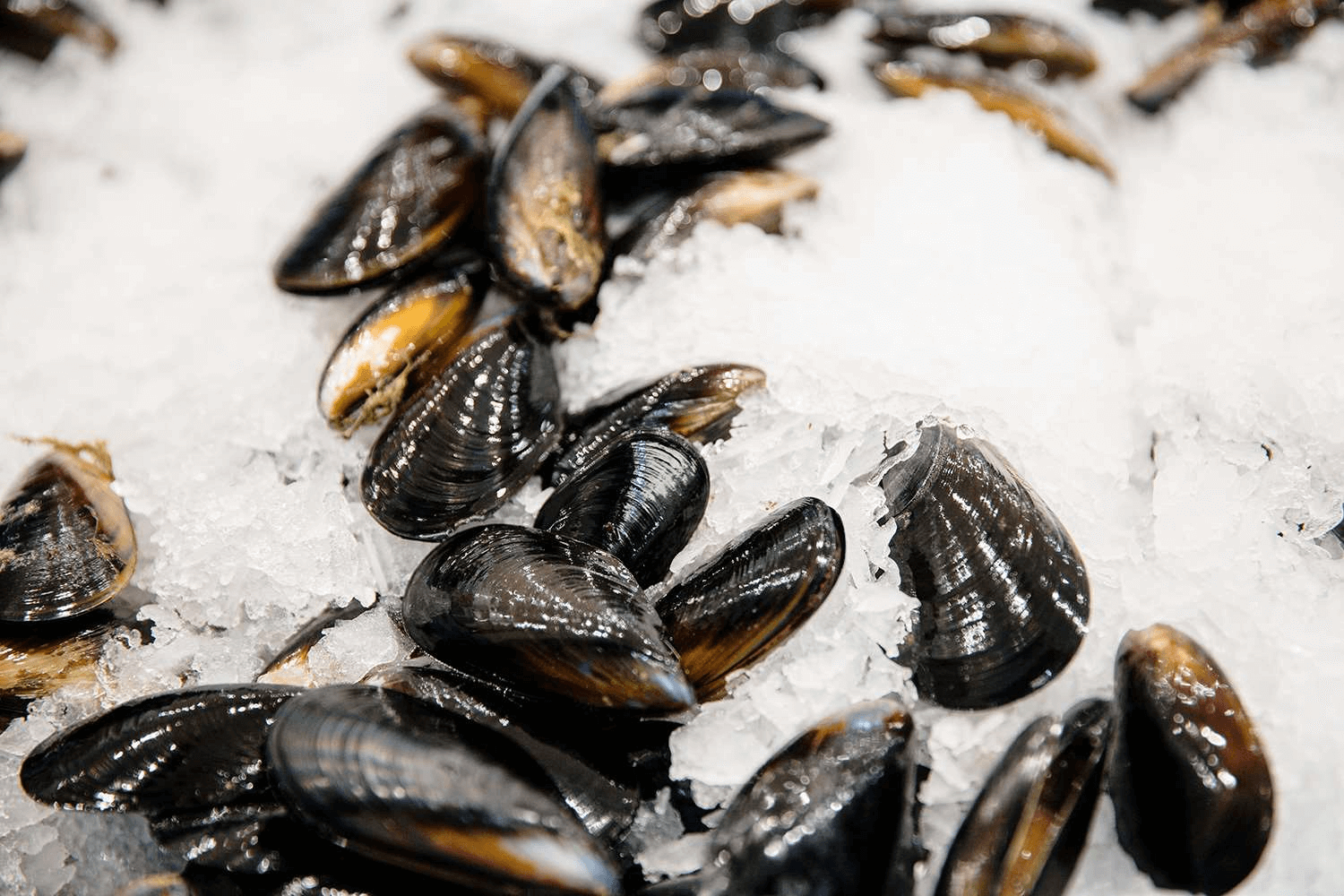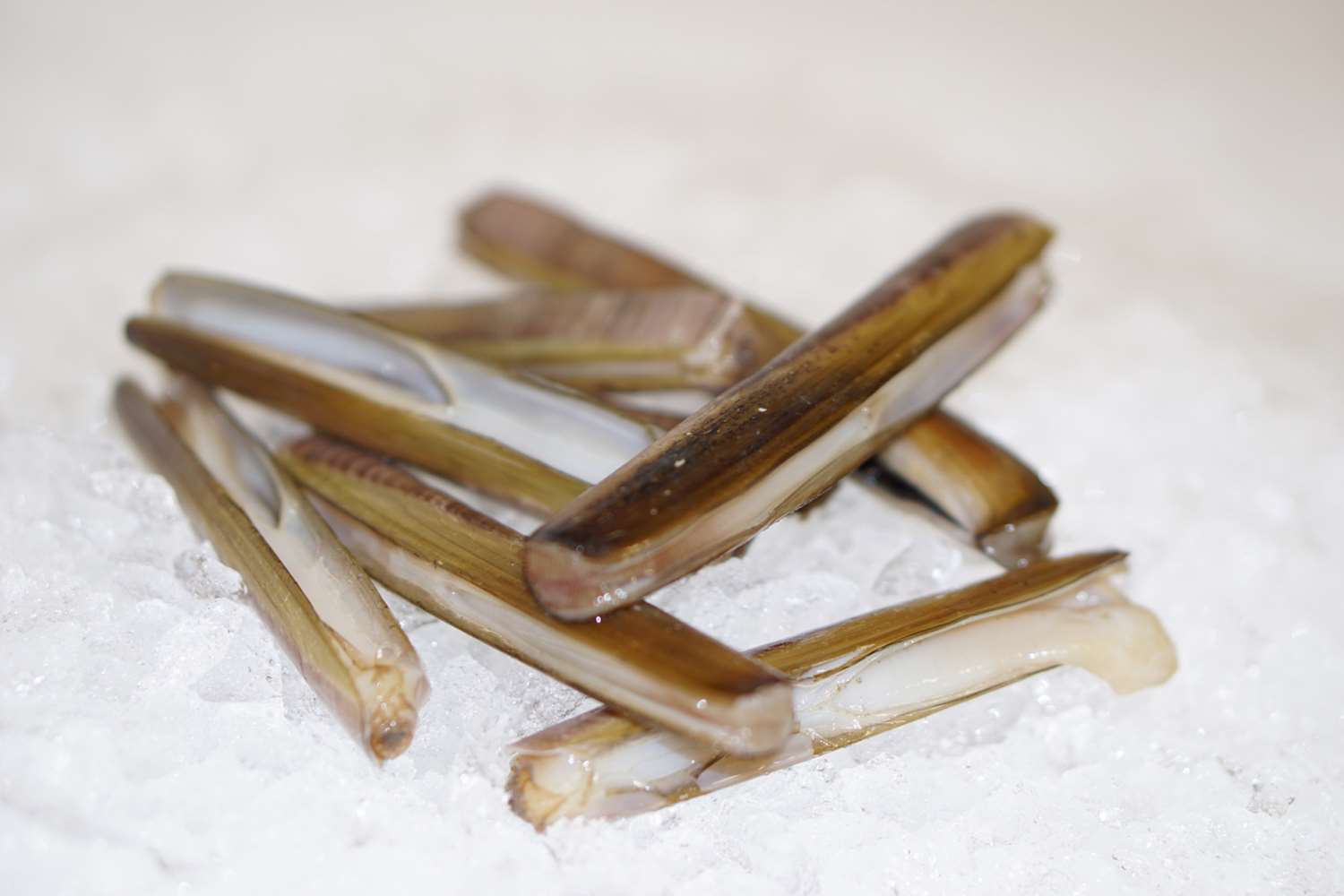

EASTER ORDERS ARE CLOSED!
Wishing everyone a Happy Easter



Can you spot the clams and mussels in this photo?
Mussels and clams are made up of hard shells that protect their soft bodies inside. But what’s the difference between clams and mussels? Let’s find out.
Thriving in saltwater and freshwater habitats, mussels are typically found in clusters attached to rocks and other surfaces. Clams also live in saltwater and freshwater environments, but unlike mussels, which cling to rocks, clams are usually buried in sand or mud in both saltwater and freshwater environments. As such, they tend to live solitary lives.
One of the most noticeable differences is in their shell structure. Mussels have elongated, oval-shaped shells with smooth surfaces and darker shells that range from dark blue to dark greenish-black. These shells open like a book when the mussel is ready to feed.

New Zealand green mussels: Popular all year round, these mussels are available online at Manettas Seafood Market.
While both are bivalve molluscs, clams have more rounded to oval-shaped shells that can be either smooth or ridged. There are two main types: hard-shell clams, which have thick, sturdy shells, and soft-shell clams, which have thinner, more fragile shells. The shell colours vary depending on the species, from white and grey to shades of brown.
| What are bivalve molluscs?
Bivalve molluscs are a large group of invertebrate animals characterised by two shells that are hinged together. Oysters and scallops are also bivalve molluscs. |
Both clams and mussels are filter feeders, but their feeding mechanisms differ. Mussels use their gills to filter plankton and other tiny particles from the water. They use byssal threads to anchor themselves in place as they feed. With this method, they can thrive in intertidal zones, where water flow brings a constant supply of food.
Clams, on the other hand, use syphons to draw in water from their surroundings. While buried in sand or mud, they extend their syphons to filter out plankton and detritus. This feeding method is efficient for clams living in soft sediments, where they can remain hidden from predators while accessing nutrient-rich water.
Mussels have a tender texture and a slightly briny taste. You can cook them in white wine with garlic and fresh herbs, creating a delicious and aromatic dish. They’re used around the world in soups, pasta dishes and as a topping for seafood salads. Moules marinières, where mussels are steamed in a broth of white wine, shallots and parsley, is a classic.
When it comes to flavour, black mussels and green lip mussels are popular for a reason. They’re great for steaming, baking and grilling, among others.

Black mussels: While smaller than green lip mussels, this variety typically has a more plump body.
Clams are equally beloved around the world, with their slightly chewy texture and rich flavour. Hard-shell clams can be eaten raw in a half shell, much like raw oysters. Add a squeeze of lemon and a dash of hot sauce, and you’ll easily fall in love with them. Soft-shell clams are frequently steamed or fried and served with drawn butter.
Ever had clam chowder? Here, clams are combined with potatoes, onions and cream to create a hearty soup. Linguine with clams is another favourite. It’s a pasta dish that pairs clams with garlic, olive oil and fresh herbs. Like mussels, clams are also versatile and can be baked or used in seafood stews and paellas.
Can you substitute clams for mussels and vice versa?Surely, the answer is up to you. However, note that these two shellfish differ in flavour and texture. However, their flavours can complement each other. You must also consider their different cooking times, which may depend on their size. |
Mussels and clams are not only delicious but also packed with nutritional benefits. Both are excellent sources of lean protein, omega-3 fatty acids and essential minerals like zinc, iron and
magnesium. These nutrients contribute to heart health, improved brain function and overall wellbeing.
Mussels, especially species like the New Zealand green-lipped mussels, are known for their anti-inflammatory properties and high levels of omega-3 fatty acids. They’re a great addition to a balanced diet, providing essential nutrients with fewer calories compared to farmed salmon or other fish.
Clams, particularly razor clams, offer a slightly different nutritional profile. They are rich in Vitamins B12 and C and provide a good amount of iron, which is essential for maintaining healthy blood cells. Clams also contain a variety of other nutrients that support immune function and energy levels.

How do clams taste? Order razor clams from Manettas and see for yourself.
The environmental impact and sustainability of shellfish farming for mussels and clams are significant considerations. Mussels and clams play crucial roles in their ecosystems as filter feeders, helping maintain clean and healthy water bodies. The former are typically farmed in sea cages or on ropes, making them a sustainable choice with minimal environmental impact.
Clams and mussels require no feed or fertilisers—they rely on natural plankton. This method of farming supports healthy marine environments and reduces the need for wild-caught fish.
Clams, particularly those farmed in estuaries and coastal areas, also have a low environmental impact. Careful management of harvest areas and reduced habitat disruption ensure that clam populations remain healthy. Efforts to protect wild populations and promote sustainable shellfish farming practices help preserve these valuable species for future generations.

Cooked clams are something to die for: Just look at this sauté razor clam with garlic and parsley.
Understanding the differences between clams and mussels can enhance your appreciation for these delightful shellfish. From their distinct physical characteristics and feeding mechanisms to their unique culinary uses and nutritional benefits, mussels and clams each offer something special.
Ready to cook clams and mussels? Whether you prefer the tender texture of green-lipped mussels or the slightly chewy texture of razor clams, both are excellent choices for a delicious and nutritious meal. Order from Manettas today and explore the diverse ways to cook and enjoy these shellfish.
Without a doubt, including mussels and clams in your diet can be a tasty and nutritious way to boost your seafood intake and its associated health benefits. Enquire today!